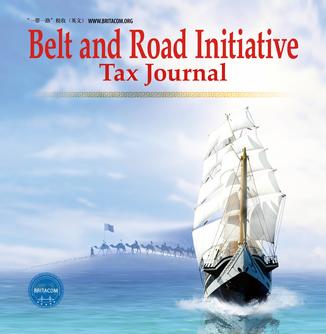This photo taken on April 25, 2025 shows robot IRON of Xiaopeng at the 21st Shanghai International Automobile Industry Exhibition in east China's Shanghai. (Xinhua/Wang Xiang)
SHANGHAI, April 29 (Xinhua) -- At the ongoing 21st Shanghai International Automobile Industry Exhibition (Auto Shanghai 2025), Chinese new energy vehicle (NEV) maker XPENG's humanoid robot, IRON, stole the spotlight by debating the merits of the company's self-developed flying car with its creator, CEO He Xiaopeng.
Combining an electric road vehicle with an electric vertical takeoff and landing (eVTOL) air module, the model has already garnered nearly 5,000 pre-orders since its debut at Airshow China last year. Deliveries are scheduled to commence in 2026.
"This is the Land Aircraft Carrier, the first-ever mass-produced flying car. The tech is absolutely next-level!" IRON said, raising its left hand and giving a thumbs-up to its audience.
This fusion of robotics and aerial mobility signals a tectonic shift: China's auto industry is no longer confined to four wheels, with automakers breaking the mold and re-imagining mobility. And with embodied AI, cars aren't just evolving -- they're branching out into the areas of flying vehicles and humanoid robotics, forging a futuristic trio for the AI era.
BEYOND WHEELS
Behind this technological spectacle is an impressive industry performance. Official data showed that China's auto production and sales both saw year-on-year growth exceeding 10 percent in the first quarter, and its low-altitude economy, according to industry analysts, is rapidly approaching the 1-trillion-yuan (about 138.8 billion U.S. dollars) milestone, growing at a compound annual rate of nearly 30 percent.
"The intelligent automotive sector is evolving into an aggregated intelligent industry," said Zhang Yongwei, vice chairman and secretary-general of NEV industry think tank China EV 100. "Smart vehicles stay on roads, flying cars ascend to low-altitude skies, and humanoid robots embody AI-driven mobility."
This three-pronged vision materialized at the show: Chery's "three-body" composite-wing flying car attracted Southeast Asian buyers seeking island-hopping solutions, while GAC Group showcased its third-generation GoMate robot capable of navigating factory floors, with its six-hour battery life powered by auto-grade energy systems.
This photo taken on April 25, 2025 shows a vehicle displayed at the booth of GAC Group at the 21st Shanghai International Automobile Industry Exhibition in east China's Shanghai. (Xinhua/Fang Zhe)
"Our humanoid robot, Mornine, is now serving as a digital shopping assistant at Chery's dealerships in Malaysia," a company representative said, adding that following its rollout in Malaysia and Russia, Chery aims to have Mornine present in all of its dealerships worldwide.
FAW Group unveiled its Hongqi-branded flying car at the show, featuring a flight range of over 200 kilometers and an intelligent cockpit system that delivers real-time voice and visual data to reduce operational complexity. The Changchun-based automaker confirmed that the vehicle will make its maiden flight this year, with development adhering to strict aviation safety standards.
"Future auto shows won't just feature cars, they'll showcase more cutting-edge tech and embodied AI," He Xiaopeng said, drawing parallels to the early days of NEVs a decade ago. While flying cars and humanoid robots are still in their nascent stages, the tech entrepreneur feels confident in their rapid growth within the coming decade.
SYNERGY UNLEASHED
Smart cars, flying vehicles and humanoid robots share common technical foundation and supply chains. Analysts say that eVTOLs can share up to 80 percent of their supply chain with electric vehicles, leveraging China's mature EV supply chain for cost efficiency.
"Smart vehicles, eVTOLs and robots share the same fundamental roots," Zhang said, adding that the control architectures, key hardware chips and software platforms developed for intelligent vehicles can be adapted for eVTOLs directly, with many components also transferable to humanoid robots.
This technological synergy has been affirmed by many industry insiders. Aptiv China and Asia Pacific President Yang Xiaoming described flying cars as "electric vehicles that fly," saying that they bridge automotive electrification and aviation compliance. And startups like Digua Robotics see cars as "four-wheeled robots."
"Autonomous driving systems -- cameras, radar and AI chips -- are identical to robotics," Digua CEO Wang Cong said.
Bolstered by thriving aviation, NEV, 5G and AI industries, China's flying car sector has built a solid industrial foundation, achieving technological parity with global competitors and even leading in certain areas.
The inexorable logic of scale also persists. With 30 million vehicles produced annually, Chinese automakers can slash costs for niche products like flying cars and robots. For example, GAC's GoMate robots are now capable of handling full vehicle production tasks in its auto plants, creating a self-contained business ecosystem within the automaker.
BRIGHT HORIZON
After 40 years of evolution, the Shanghai auto show has cemented its position as the world's premier automotive exhibition in both scale and prestige.
"The exceptional visitor enthusiasm at this year's event speaks volumes about the robustness of China's industrial ecosystem and the magnetic pull of its economy," said Gu Chunting, vice chairman of the Council for the Promotion of International Trade Shanghai, which organized the event alongside the China Association of Automobile Manufacturers.
From Toyota's 2-billion-dollar Shanghai EV hub to BMW's deepened partnerships with Chinese tech companies like Huawei and DeepSeek, global players are anchoring themselves in China's mobility metamorphosis.
"China has emerged as the world's foremost proving ground for electric and intelligent vehicle transformation over the past 10 years," said Guan Mingyu, a senior partner at McKinsey & Company Greater China, noting that the Chinese market's evolution in these sectors will reshape global automotive technology roadmaps, business architectures and competitive dynamics through the next decade.
A Hongqi flying car is exhibited during the 21st Shanghai International Automobile Industry Exhibition in east China's Shanghai, April 23, 2025. (Xinhua/Fang Zhe)
From wheels to wings and robots, China's auto industry is pioneering a smart ecosystem powered by cross-sector synergy and industrial scale. The country's eVTOL industry is approaching the threshold of mass production and scaled deployment, and its humanoid robotics are just beginning to show growth potential.
"China's low-altitude economy hit its stride since last year," said Zhao Deli, founder of XPENG's flying car affiliate, Huitian. "Policy tailwinds, infrastructure rollouts and maturing supply chains are fueling growth, especially in drone logistics, air taxis and emergency services."
Zhao noted that China's low-altitude tourism sector, though still small-scale due to infrastructure gaps and high costs, holds strong growth potential. Fueled by rising demand, it could become both a tourism highlight and a driver of regional economic development.
"More supportive policies will energize the market, channeling greater resources into infrastructure development, investment and consumer engagement," he added.




 A single purchase
A single purchase









